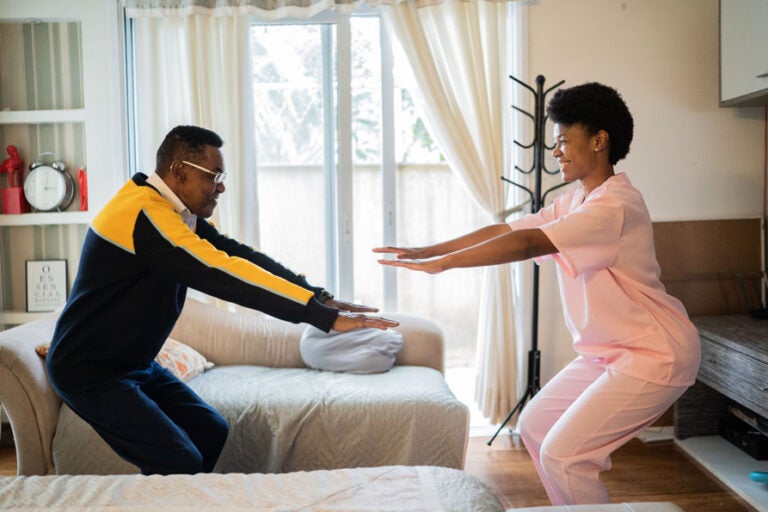With inflation and life expectancies increasing, today’s retirees may need to stretch their retirement savings a bit longer than anticipated. If you find yourself in this position, here are five strategies to help you supplement your nest egg, so it lasts longer.
1. Continue Working
As great as passive income is, active income—income produced by spending your time doing something in exchange for money—can typically provide a much greater cash boost in a shorter time and is a great way to stretch your retirement savings. The downside, of course, is that you have to work for it. But that may not be an entirely bad thing. Continuing to work in your older years may protect against physical and mental decline and improve your self-esteem and overall life satisfaction.
And if you continue working in some capacity in retirement, you won’t be alone. As many as 25% of older workers anticipate working part-time before retiring completely.
But if you’re done working for someone else in a formal employment setting, consider using your professional skills as a freelancer or consultant. You can set your own hours and work as much or as little as you want. You may be surprised at how much you can earn and increase your retirement savings relatively quickly!
2. Tap Your Home Equity
Multiple financial vehicles allow you to trade some of the equity you have in your home for cash or credit. Once you reach age 62, if you have a decent amount of equity in your home, you may be eligible to take a reverse mortgage.
A reverse mortgage is essentially borrowing against the equity in your home. Unlike a traditional cash-out refinance in which you pay down the balance over time in monthly installments, the lender pays you, and your loan balance increases over time. Because you don’t have required monthly mortgage payments with a reverse mortgage, your monthly cash flow increases allowing you to tap your retirement savings less.
Eventually, when you are no longer living in the home (such as when you pass away or sell the property), the reverse mortgage must be paid off, usually through the sale of the house.
3. Get a Roommate
It’s not uncommon for retirees to view downsizing their living space as a beneficial or necessary component of growing older. Many feel their house is too big for them now that their children or other relatives have moved out. Others think that downsizing can help them create a more secure financial future for themselves.
However, an alternative to downsizing that can help you stretch out your retirement savings is renting out space in your current home. Even an extra $500 per month from a room rental can mean an additional $6,000 income per year; over a 20-year retirement, that’s $120,000 without considering likely rent increases.
If finding a tenant by listing your room for rent to the general public makes you a bit nervous about safety, or if you need help with daily tasks, consider using a third-party arranged homesharing (TPAHS) organization. These organizations can match you with a pre-vetted renter who meets your criteria.
But if the idea of a stranger living in your house still makes you squeamish, consider renting out your extra rooms as storage space.
4. Rent Your Assets
If you want to stretch your retirement savings, it’s important to get creative and think about interesting ways to either save or generate income. For example, rooms aren’t the only things you can rent out. Think about all the things inside your house you’ve accumulated over the years that you no longer use. Sure, you can donate them or sell them at a yard sale for pennies on the dollar—or you can turn them into income-producing assets to supplement your main streams of retirement income.
For example, if you’ve continued to maintain your style over the years, you can rent out your clothes on a site like Rent My Wardrobe. Or maybe you have large baby gear such as cribs, pack-n-plays, and car seats that your children or grandchildren used when they were small but have since outgrown.
Since traveling with small children is cumbersome enough, many families on vacation opt to leave their baby gear at home and rent it once they arrive at their destination. If you’d like to learn more about renting out baby gear, check out BabyQuip.
The possibilities for renting out your assets are endless — from backyards to musical instruments to fishing gear; chances are you have something you could rent out.
5. Keep Your Money Working for You
After you stop working, it can be tempting to take your money out of the securities markets and deposit it into “safer” vehicles such as savings accounts or certificates of deposit.
While making a move like this may give you some sense of security initially, it can be detrimental to your long-term retirement plans since your cash generating 1% interest at the bank may not last as long as you think.
Whether you’re working, semi-retired, or fully retired, it’s important to always have some of your assets in asset classes, such as stocks that can potentially generate greater yields over time. However, at the same time, it’s important to have some of your portfolio allocated to assets carrying less risk that you can tap into when the market is down.
Seniority is published by Finance of America Reverse LLC. The views expressed in this publication are those of the author alone and do not necessarily reflect the views and opinions of Finance of America Companies. This article is intended for general informational and educational purposes only and should not be construed as financial or tax advice. For more information about whether a reverse mortgage may be right for you, you should consult an independent financial advisor. For tax advice, please consult a tax professional.




